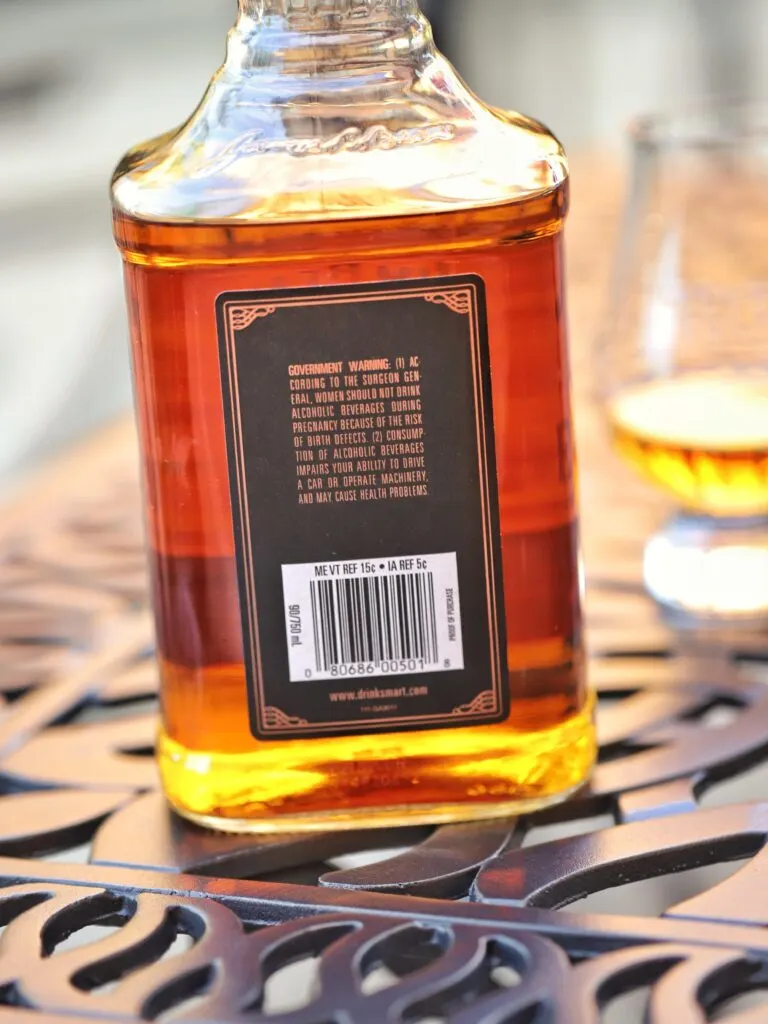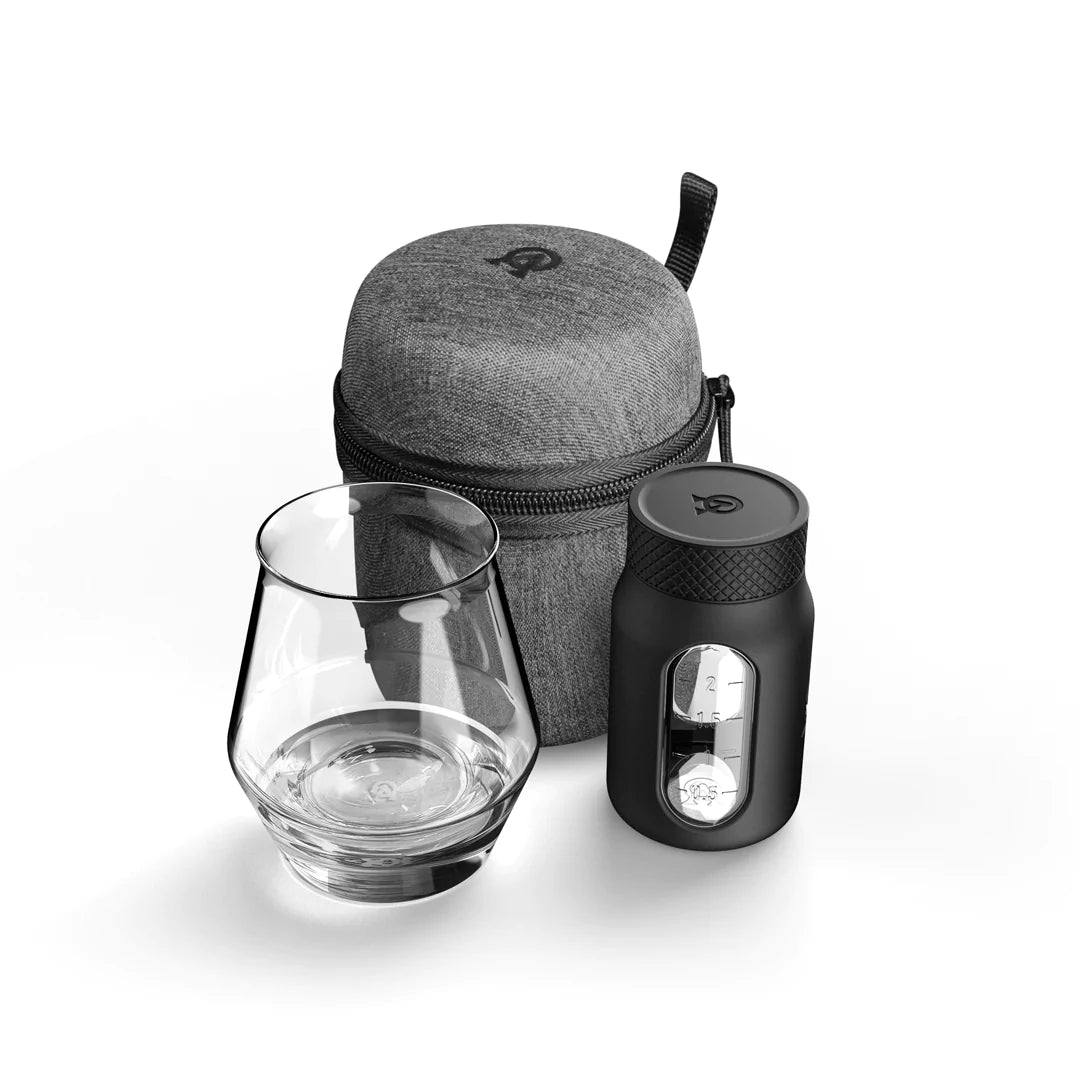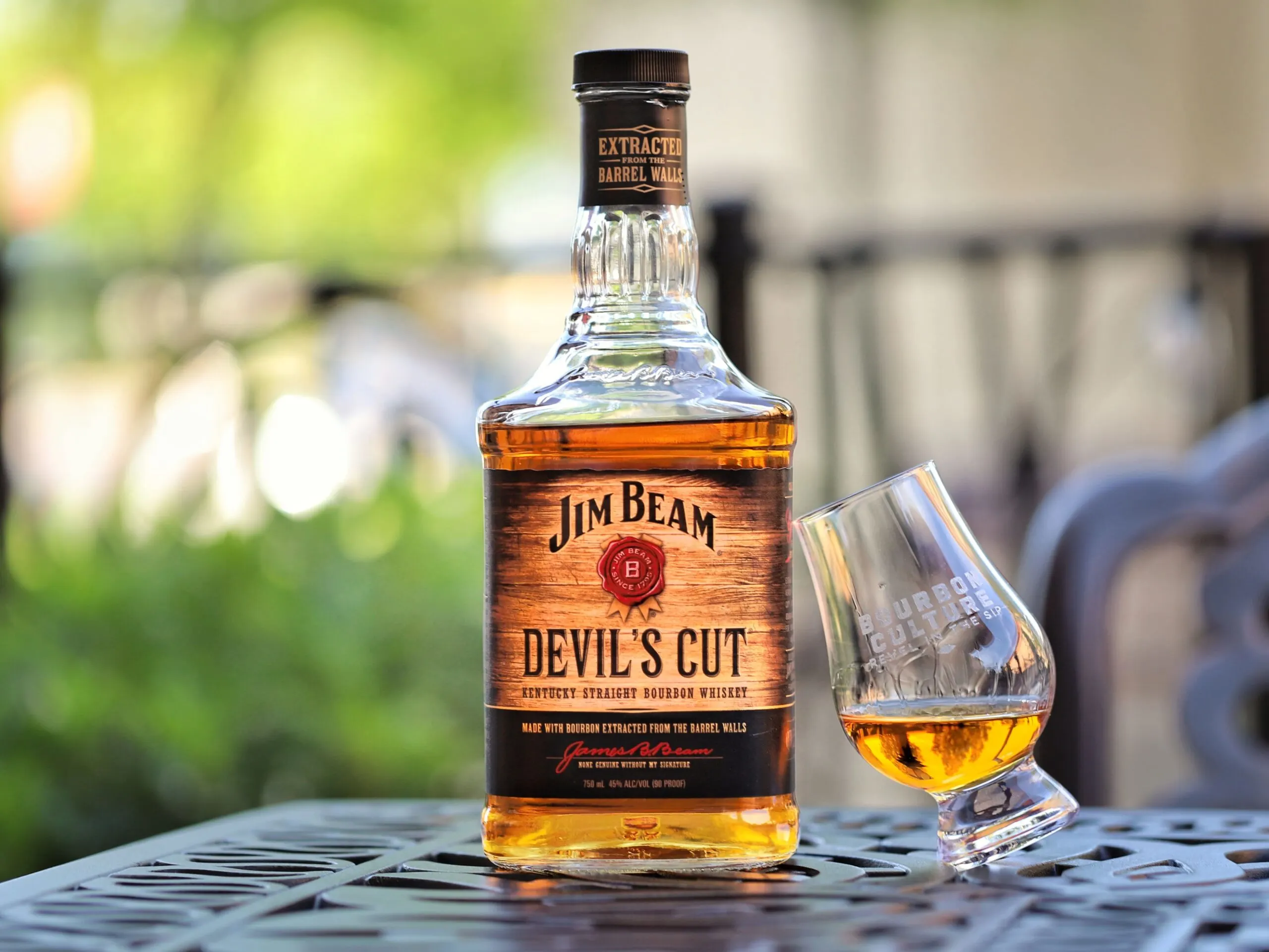| Don't like ads? | No ads |
For the bourbon drinkers out there that are always chasing the newest and best whiskies to try, Jim Beam’s standard range of products may not seem like they have much to offer. These products are generally low in proof, age and price which make them feel like they’re meant to be used as mixers or sipping whiskey when you want to relax with something that doesn’t break the bank. This is nothing new because every brand has bottles like that.
The one thing that can invigorate the sales of bottles that set low on the shelf is to give it something that stands out from the crowd. But experimentation usually increases the cost to make the whiskey which in turn will increase the price. And if it moves beyond the $20-30 price point, you’ve probably lost a larger group of customers who will only buy in that range. Jim Beam’s marketing team pitched around a few ideas for making a unique product that could be sold for cheap and wouldn’t require that much more money to produce. The final product ended up being Jim Beam Devil’s Cut.

What is Devil’s Cut?
In bourbon, there are two words used to describe how the liquid inside the barrel ends up disappearing over time: Angel’s Share and Devil’s Cut. The Angel’s Share is the process of evaporation where alcohol or water evaporate and escape through the wood. The Devils’ Cut occurs when heat forces the wood and the liquid to interact, pushing the liquid through the charred layer and into the wood grain structure. When the temperature drops, most of the liquid is pulled back out of the wood. It is said that several gallons of whiskey remain trapped in the wood when a barrel is fully dumped.
If you talk to enough bourbon enthusiasts, you’re ultimately going to hear of their attempts to try and get the Devil’s Cut out of a used barrel. The basic idea is that they pour a bit of water into a used barrel, seal the bunghole back up and let it set in the sun for several weeks. Sometimes a portion of the whiskey will come out of the staves. Sometimes the water just absorbs the oak and char and colors the liquid. But the allure of free bourbon inside of every barrel is too much to pass up for some.
The problem with this is the bourbon that comes out at the end of the process lacks any semblance of quality control. What I mean by that is that the bourbon is usually watered down (if they added water to the barrel in the first place) or is overly oaky since it was the liquid that was literally entrapped in the wood. But people seem to be happy that they got something for nothing – minus the cost of the barrel.
How did Jim Beam manage to remove the devil’s cut?
Jim Beam doesn’t tell us much about how they extract the liquid trapped inside the barrel staves except that it utilizes a “proprietary process.” There are a few reviewers who have published what they think it may entail with The Whiskey Jug having perhaps the best explanation for what this process entails.

First they take barrels of whiskey that have been aged for at least 6 years, so they say, and dump them for blending. They then take those barrels and us a proprietary process involving water, mechanical agitation and heat to basically “sweat” the barrels and extract the bourbon from the wood. Then they add the extract back into the previously dumped whiskey and bottle it as Devil’s Cut.
This process sounds an awful lot like the one I mentioned above where people try to sweat out some extra juice from the staves simply by adding a bit of water, sealing the barrel up and exposing it to heat. Except the mechanical agitation process makes me curious what that is like. Is it like a larger version of those machines used to shake up paint cans at a hardware store? I’m not entirely sure.
I spoke with an anonymous source at Jim Beam that said they could not detail what the process is exactly, but that it wasn’t how The Whiskey Jug described. Instead, it was much more simplified. My only guess would be that the freshly emptied barrels have some water added back into them for a short while and that water is used to proof down the bourbon to 90 proof.

So what does this extra process translate to in terms of flavor? Let’s find out. I sampled this neat in a glencairn.
Tasting Notes
Nose: From the first sniff to the last, the oak and barrel char notes are hugely impactful. The interesting thing is that it seems to cover up some of the more traditional sweetness that I find in Jim Beam products. The sweetness here comes by way of caramel and caramelized stone fruits (but just a bit). There’s some standard cinnamon and light vanilla and even the telltale Beam nutty scent.
Palate: Sipping on this is kind of strange because I feel like the proof is almost non-existent. This carries over to the flavors too. While I can taste that this is a bourbon, there seems to be an initial barrier between the flavors and my taste buds. Does this have anything to do with the extraction technique of the devil’s cut? After a little more studying, I can begin to taste notes of chocolate, wood and cinnamon. Caramel and some of the stone fruit from the nose are detected too. It’s a nice bourbon that’s classic Beam through-and-through but has an extra touch of stone fruit along with a big punch of oak. The flavors just seem to be a bit subdued and none of them jump out at you and try to get your attention.
Finish: The finish is almost entirely cinnamon and oak. If there are any other flavors, they’re either hiding or have run away. So while the finish is okay, it kind of just drops off. Sweetness has left the room too, leaving only the slightest thin syrup aftertaste.
Score: 5.6/10
Overall, this bottle of Devil’s Cut delivered an excellent nose, a weird palate and a very one-dimensional (almost non-existent) finish. This left the whole experience to be average at best. The Devil’s Cut extraction process felt like it did deliver extra notes of wood but it wasn’t the kind I’d typically crave.

Wood and oak notes need age in a barrel to become special – delivering almost a wood varnish or antique-like sensory experience. Instead, Devil’s Cut tastes like a bit of wood pulp was blended into every batch. It wasn’t exactly bad, but it wasn’t something I would hunt down on a shelf either.
Final Thoughts
Kudos for Jim Beam’s marketing department for tapping into a term that bourbon enthusiasts will instantly recognize. I think that the label design is a bit tacky, but I guess the imagery helps sell the product. I just wish they’d expand more a bit about how they get the Devil’s Cut out of the barrel staves. But then again, if the process truly is 99% marketing fluff, maybe ignorance is bliss.
Jim Beam has been making this product for almost 7 years now and it seems like it doesn’t move from the shelves much. So if you’re at the store right now looking for a bourbon to mix with, I’d recommend Beam Black instead. It’s about $7 less than this and might be aged longer. But if you’re after a whiskey that gives you extra oak in every sip, I would recommend Jim Beam Double Oak or segment leaders Woodford Reserve Double Oaked or Old Forester 1910. Devil’s Cut just doesn’t have enough in it to make it a worthwhile purchase.
Featured Products
- Neat Traveler

- View Larger
- Description:The Aged & Ore Neat Traveler is a complete travel kit for spirits. We combined our widely praised Neat Glass with one of our 3oz Flight Bottles and housed them together in a custom EVA travel case. Perfect for a night away with your favorite pour. The tie
- Bottle Flight

- View Larger
- Description:The Aged & Ore Bottle Flight is a premium set of 4 custom silicone wrapped glass bottles designed to transport and share samples of your favorite spirits. The flight bottles come in a custom EVA travel case that fits perfectly in any small bag. An Aged &
- Travel Bundle

- View Larger
- Description:This Bundle combines two of our crowd favorite products, creating the ultimate travel bundle to bring along your favorite spirits and glassware. Bundle Includes: Neat Traveler (Gray) Bottle Flight (Gray) Note: This bundle is only available in gray and col
*Bourbon Culture is reader-supported. When you buy through links on our site, we may earn an affiliate commission.

